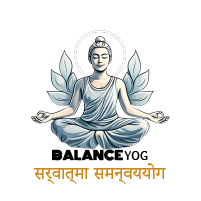Relaxation techniques in yoga
16 September 2025In yoga, relaxation techniques are integral to promoting mental calmness, reducing stress, and enhancing overall well-being. These techniques are often integrated into yoga practice to facilitate relaxation of the mind and body. Here are some common relaxation techniques used in yoga:
1. Savasana (Corpse Pose)
- Description: Savasana is a classic relaxation pose practiced at the end of a yoga session. It involves lying flat on your back with legs extended, arms relaxed by your sides, eyes closed, and focusing on deep, rhythmic breathing.
- Benefits: Promotes deep relaxation, relieves tension in the body, calms the mind, and integrates the benefits of the yoga practice.
2. Deep Breathing (Pranayama)
- Description: Various pranayama techniques in yoga focus on controlling the breath to calm the mind and relax the body. Examples include:
- Diaphragmatic Breathing: Inhaling deeply into the abdomen and exhaling fully to release tension and promote relaxation.
- Alternate Nostril Breathing (Nadi Shodhana): Balances the left and right sides of the brain, calms the nervous system, and enhances overall relaxation.
3. Progressive Muscle Relaxation
- Description: This technique involves consciously tensing and then relaxing each muscle group in the body sequentially, promoting physical relaxation and reducing muscular tension.
- Benefits: Releases muscular tension, improves body awareness, and enhances overall relaxation response.
4. Yoga Nidra
- Description: Also known as yogic sleep, Yoga Nidra is a guided meditation technique practiced in a comfortable lying position. It involves systematic relaxation, body scanning, visualization, and conscious awareness of sensations, thoughts, and emotions.
- Benefits: Deep relaxation, stress reduction, improved sleep quality, enhanced self-awareness, and emotional healing.
5. Restorative Yoga
- Description: Restorative yoga involves gentle poses supported by props (such as bolsters, blankets, and blocks) to facilitate deep relaxation and release tension.
- Benefits: Promotes relaxation, reduces stress, supports physical and mental healing, and enhances overall well-being.
6. Mindfulness Meditation
- Description: Mindfulness meditation practices in yoga involve cultivating present-moment awareness, observing thoughts and sensations without judgment, and focusing on the breath or a mantra.
- Benefits: Reduces stress and anxiety, improves concentration and mental clarity, enhances emotional regulation, and promotes overall relaxation.
7. Guided Imagery
- Description: Guided imagery techniques in yoga involve visualizing peaceful and calming scenes or experiences to promote relaxation and reduce stress.
- Benefits: Enhances relaxation response, reduces anxiety, improves mood, and supports emotional well-being.
Incorporating Relaxation Techniques in Yoga
- Intention Setting: Begin your yoga practice with an intention to relax and let go of stress.
- Mindful Movement: Practice yoga poses mindfully, focusing on the breath and sensations in the body.
- Integration: Incorporate relaxation techniques such as deep breathing, Savasana, or Yoga Nidra at the end of your yoga session to integrate the benefits of the practice.
- Consistency: Regular practice of relaxation techniques in yoga builds resilience to stress and supports overall mental and physical well-being.
By incorporating these relaxation techniques into your yoga practice, you can effectively reduce stress, promote relaxation, and cultivate a deeper sense of calm and well-being in your daily life.
MSRT (mind sound resonance technique)
PET(Pranic Energization Technique)
CM(Cyclic Meditation)
Krida yoga




